National Library of Serbia Manuscripts

Cetvorojevandelje manastira Slepce 1548 (RS 102)
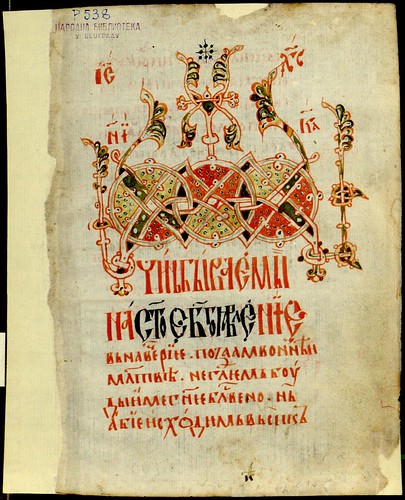
Sluzabnik - odlomak 1453 (RS 538)

Psaltir - odlomak 18th century (RS 672)"
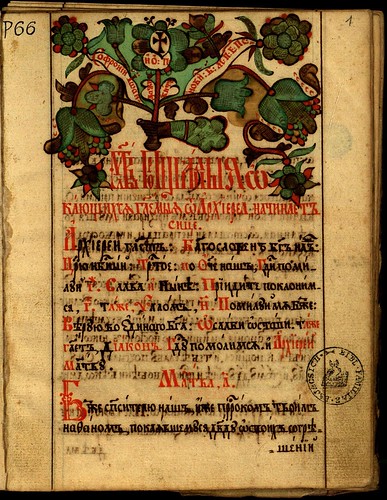
Arhijerejski cinovnik 1750s (RS 066)
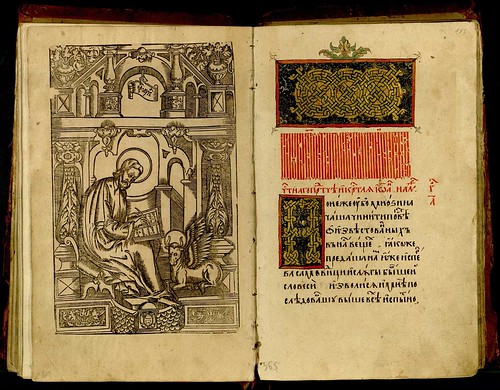
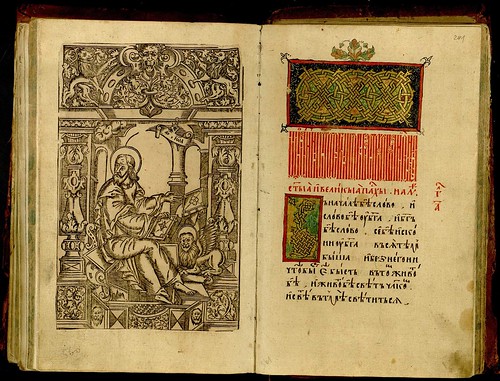
Cetvorojevandelje 17th century (RS 555)
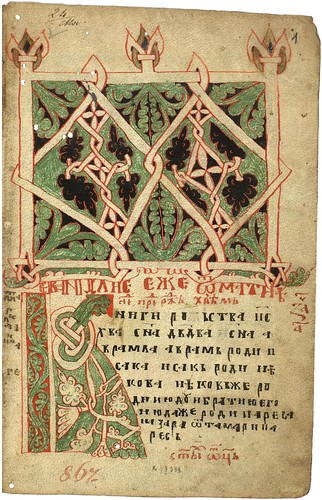
Kopitarevo bosansko evandelje 14th century (Kop 024)
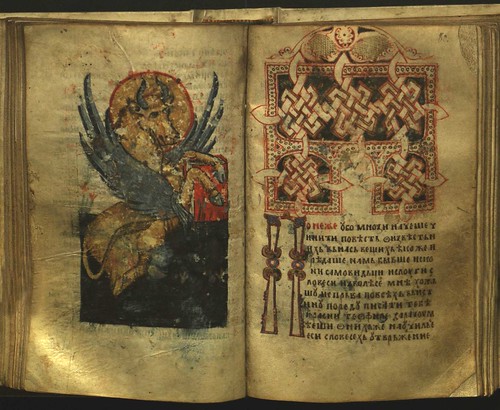
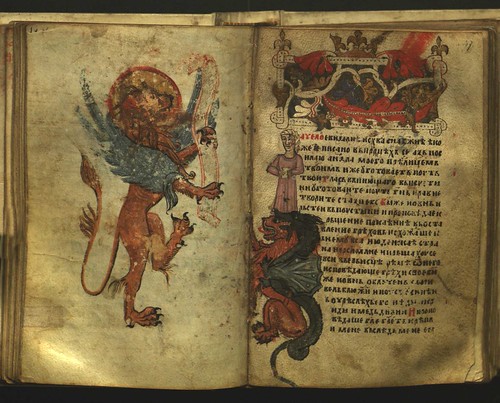
Nikoljsko jevandelje - 14th cent. (Dublin RU 147)
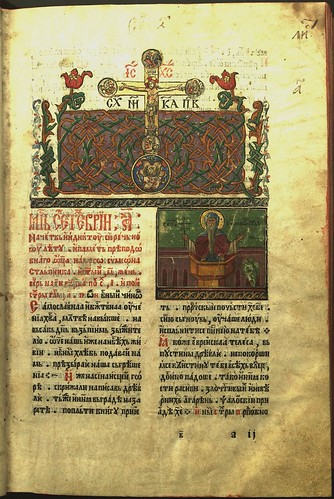
Praznicni minej by Božidar Vukovic, 1537 (Dublin RU 149)
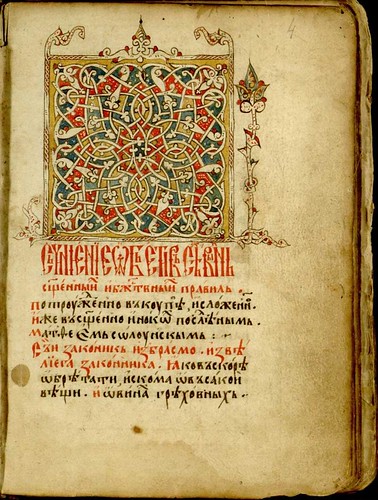
Prizrenski rukopis Dusanovog zakonika 1515-1525 (RS 688)
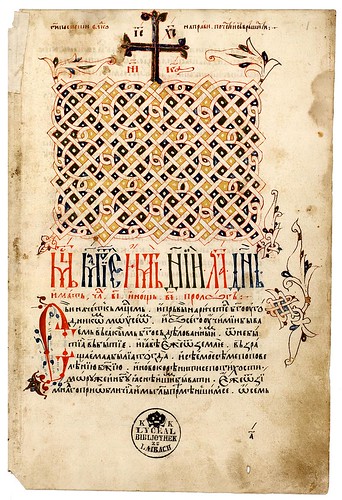
Prolog stihovni za letnju polovinu godine, 1566 (Kop 004)
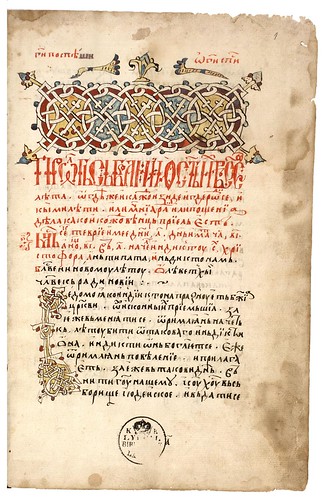
Prolog stihovni za septembar - decembar 1594 (Kop 019)
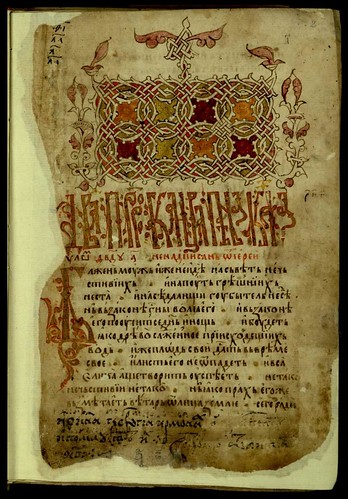
Psaltir s posledovanjem -- Pavie - pisar 1573+ (RS 030)
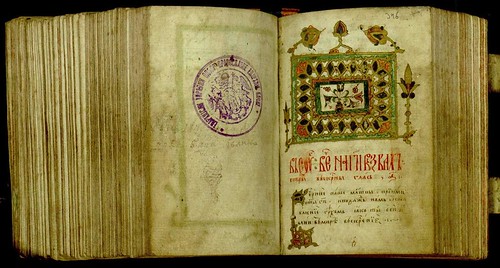
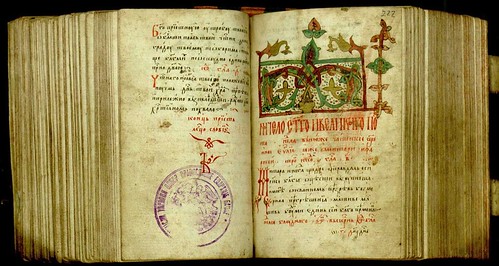
Psaltir s posledovanjem by Hristofor Racanin - pisar, 1645 (RS 326)

Trebnik 1800 (RS 687)

Trebnik 1817 Popovic, David - pisar (RS 106)
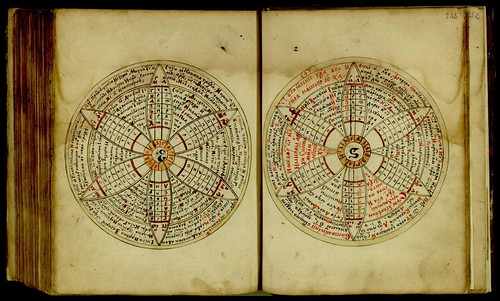
Život Sv. Save od Teodosija 17th century (RS 054)
The Digital National Library of Serbia has more than five hundred cyrillic manuscripts available online¶. (in english) The images above were selected from: National library of Serbia's collection of cyrillic manuscripts (RS); Jernej Kopitar's collection of slavic manuscripts (Kop) and the Chester Beatty collection (Dublin) of cyrillic manuscripts (RU).
At best, the array of images above gives a modest overview of the styles of manuscript text decoration that can be found among the library's holdings. But really, this is just a sampling without too much in the way of cohesive storyline or connection between the works - apart from the writing script - in terms of location, era, scriptoria and copyists involved or background influences. Perhaps it might be said that the majority are religious in nature.
A wall of complexity meets even the most basic of background enquiries. The Slavic peoples inhabit lands stretching from the Balkans through Eastern Europe and on up to Western Russia. The cyrillic script (and its antecedents) provides the basic written units for a dozen or more related languages. The Balkan Slavs were inheritors of Byzantium culture, but Oriental and Scandinavian influences are also important. The knotwork decoration seen in many of the images above suggest a significant influence by (or, say, exchange with) the Celtic manuscript tradition (eg.). Factor in the relocation of manuscripts, the migrational patterns of people over centuries, wars, a thin record/colophon in relation to many of the Medieval Slavic and cyrillic manuscripts; and an interested casual observer, hoping for some overarching storyline about the background to this body of work, meets instead a veritable maze of possibilities. [trust that some of this is inaccurate]
Some of the sites I persused in my less than extensive travels (many of them fairly tangential):
- Wikipedia: cyrillic alphabet; Slavic people; endless knot; George Bain.
- New Advent: Illuminated Manuscripts.
- Windows to the Past - Serbia's Written Heritage by Mary Nicklanovich.
- Old Russian and South Slavonic Manuscript Books at NLR.
- Russian Manuscript Illumination at NYPL.
- Encyclopedia of the Middle Ages By André Vauchez et al.
- The Society for the Promotion of Byzantine Studies Online (link set)
- Societas Celto-Slavica.
- Miroslav's Gospel at WDL. [Addit. More here]
- Update: redrawing the script at Ministry of Type.
- Update 2: Seems appropriate to add this here --- 'Croatian glagolitic heritage related to Lika, Krbava, Gatska, Modrus and Senj' by Darko Zubrinic.
The site is easy enough to navigate, although it's fairly unique web architecture. You can load each collection in a flash or html page. When you choose and load a manuscript in the flash screen, click on 'book images' to get all the thumbnails. If you want to load the jpeg file of a manuscript page, click the print icon at the top and it will open another tab with the image.




















10 comments :
Somewhat tangential to the above, there was an interesting article in the New York Review of Books not long ago about Coptic influences on Celtic manuscript illumination. The articles is at:
http://www.nybooks.com/articles/21979
Those are quite remarkable. I don't think I'd really ever seen illuminated materials in the Cyrillic script, although it seems as though surely I must have at some point. But also--besides the Celtic-like interlacing (which could also be compared a bit to medieval Islamic metalwork patterns)--I'm surprised how much these tend to have a color scheme favoring red and green.
Speaking of the Copts, I wonder whether there would be a more direct relationship here than on the Celts since, of course, Serbia is closer to North Africa...
Perhaps one of these days George Bain could be a feature too? I don't know what's online about his work, I just know his book on Celtic interlacing.
Thanks Chris, I think that's less tangential than most of my palaver above. It's actually a very interesting review.
Karla, from that NYB article:
"A growing body of evidence suggests that contact between the Mediterranean and early Christian Britain was surprisingly frequent."
"What makes this link so intriguing is that Michelle Brown demonstrates convincingly how the same Coptic and Eastern Christian manuscripts that influenced the Lindisfarne Gospels also influenced the work of early Islamic painters and calligraphers."
It's a melting pot. I was waiting for mention of Maori influence ;- )
Yes, unquestionably there was quite a bit of contact between the Mediterranean and early Christian Britain (there was Roman Britain, let's remember), but people from some parts of the Mediterranean traveled more. I never really run into anything about the Copts traveling, but I'm looking forward to reading the article. I think the basic thing for us to remember is that people clearly traveled much more than we were brought up to think was the case.
Maori influence is next, I'm sure.
Fascinating article! Now I want the Michelle Brown book (wouldn't object to having the other books reviewed either).
And there was the poem about Pangur Ban the cat, which I've always liked.
Karla: "I'm surprised how much these tend to have a color scheme favoring red and green"
Color technology at the time was amazingly limited, they didn't have much else besides red and green that was affordable. See 'Bright Earth' by Philip Ball.
I realize that there were considerable differences in the price of pigments, but I was mentally comparing to the range of colors in other manuscripts of the general period, which tends to be extensive. If red and green were the most affordable pigments and show up heavily in Serbian manuscripts, that seems to argue for a considerable economic gap between Serbian patrons and patrons in many other parts of Europe. (Not that that would be so surprising.)
Well worth the effort of the research IMO.
This is far too much for me! I´ve spend the very last night on this blog, forgetting that there are deadlines in the world outside. There is so much to learn from the old masters of book illustration! Thanks for reminding us all!
P.
For our national library to be featured here - wonderful.
It's such a shame that a lot of books burned when the Nazis bombed it during WWII.
Each time I pass the hole where it once stood (left for remembrance) and get sad about all the lost books, not to mention lives...
* * * * *
I remember reading "Život Sv. Save od Teodosija" (Life of St. Sava by Theodosius) for my medieval literature class; too bad there were no illustrations like that :D .
Post a Comment
Comments are all moderated so don't waste your time spamming: they will never show up.
If you include ANY links that aren't pertinent to the blog post or discussion they will be deleted and a rash will break out in your underwear.
Also: please play the ball and not the person.
Note: only a member of this blog may post a comment.